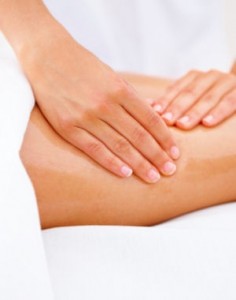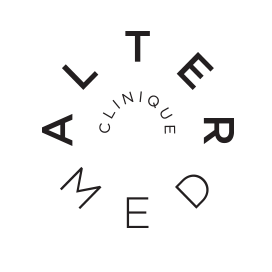Didier Gall
Montreal masso-kinesitherapy
The existence of the lymph has been known since 1654, thanks to the work of the Danish physiologist Thomas Bartholin. This colorless to whitish liquid has the function of nourishing and cleaning the cells. It accounts for 15% of body weight.
What is lymph?
Lymph circulates through the lymphatic vessels in the body through pulsating contractions of muscles and blood vessels. It drains toxins and cellular debris. Nodes located along the lymphatic vessels, particularly in the folds of the groin, under the armpits and on each side of the neck, allow the lymph to be purified before it is directed to the blood system through the intermediary of the veins. When the circulation of the lymph in the lymphatic vessels is deficient, the body becomes weak and intoxicated, which leads to various health problems: premature aging, cellulite, heavy legs, swollen ankles, etc.
What is the Lymphatic System?
It is the system of return to the venous blood circulation of part of the nourishing liquids in which all the cells of the body are bathed. It includes lymph, lymph capillaries, lymph vessels and lymph nodes.
It also includes specific organs such as the thymus, spleen and tonsils, intestinal mucosa, appendix and bone marrow. This system is linked to our immune system.
What is lymphatic drainage?

It is a manual massage technique. First, a little context.
There are two main methods in manual lymphatic drainage (MLD):
The Vodder method and the Leduc method
1. Dr. Emil Vodder's practice dates back to 1932, when he developed his technique while looking for a way to treat chronic sinusitis. He then used it for other ailments for therapeutic and aesthetic purposes.
2. Dr. Albert Leduc's method is derived from the work of Vodder, but uses somewhat different maneuvers.
For my part, I will refer to the Leduc method because it is the one I know and practice (the two techniques have the same applications.)
So, it is a massage technique characterized by very soft and precise movements, lightly supported and rhythmic pressures. The drainage is done with the fingers and the palm of the hand on the whole body. This massage works on all the liquids (interstitial liquids and lymph) of the body respecting the direction of the lymphatic circulation - from the extremities towards the heart (characteristic of the Leduc method). It does not use any device, rather the sensitivity of the hands of the therapist.
The goal is to drain excess fluids from the tissues, improve circulation and detoxify the body while strengthening the immune system.
How is a lymphatic drainage session carried out?
The massage is practiced without oil, directly on the skin. The whole body is therefore massaged (except the genitals) in a constant rhythm. The naked person is lying on a massage table and covered with a sheet. The practitioner uncovers the area to be treated and performs a series of slow, gentle wave-like movements that create a pumping effect. The feeling is very relaxing. The massage is not muscular and the pressures are light. Lying on your back the massage starts at the head, then towards the trunk, the arms, the legs. Then on the stomach, it is the back of the head, the back, the pelvis which is drained. The duration of a session is approximately 1h00 to 1h20.
The effects of lymphatic drainage?
- Activate and improve the naturally very slow lymphatic circulation. One hour of lymphatic drainage is equivalent to 24 - 36 hours of normal body lymph circulation. Often a sedentary life stagnates the lymph that has no "heart" or pump to circulate it.
- Drain, filter and purify the lymph of toxins and metabolic waste.
- Regenerate all the cells of the body so that they nourish themselves in a filtered liquid and discharged of its waste.
- Stimulate the immune system.
- Reduce and prevent the proliferation of inflammation.
- Procure gradual resorption of edema by draining the excess liquids bathing the cells.
- Accelerate the healing process and reduce the risk of infection.
- Bring relaxation and deep relaxation.
Indications for lymphatic drainage
Lymphatic drainage is highly valued:
- By pregnant women to relieve the lower back and legs that tend to swell.
- By people who have a weak immune system, to make them more resistant
- By the elderly, more fragile, but who can be touched without danger while supporting their health. Comparable to a flu shot in preventing flu infections.
- In cancer prevention.
- By migraine and headache sufferers.
- During various inflammations, tendonitis.
- To unwind, relax
The results are sometimes spectacular in a few sessions: more resistance, no colds or seasonal flu as usual or shortened duration of episodes, chronic sinusitis which becomes rare, better energy, relaxation, reduction or elimination of chronic migraine, less joint inflammation, etc. It is also a great relaxation, a guaranteed pleasure of softness.
It should be noted that a drainage already gives results, but that it is sometimes necessary to count 2-3-4 (or more) drainages to achieve the objectives, depending on the case.
Here are other indications of lymphatic drainage
Post-traumatic and post-operative edema:
Big arm (Mastectomy) – Fracture – Sprain – Strain – Hematoma – Bruise (Blue).
Respiratory Disorders:
Asthma – Bronchitis – Hay fever – Sinusitis – Excess mucus.
Rheumatic conditions:
Shoulders inflammation, hips, pelvis – Tendonitis - Bursitis
Circulatory Disorders:
Venous insufficiency – Varicose veins – Lymphedema – Varicose ulcers – Cellulitis – heavy legs – PMS (premenstrual syndrome) – Glaucoma – Ménière's syndrome – Tinnitus.
Poisoning:
Food – Medicinal – Drug.
Nerve Disorders:
Multiple sclerosis – Neuralgia – Headache – Migraine – Insomnia – Stress – Depressive syndrome.
Infectious diseases :
Colds – Flu – Mononucleosis.
Disease of internal organs:
Constipation – Colitis.
Dental Disorders:
Inflammation of the gums – Periodontosis.
Contraindications
Certain disorders require careful treatment, including carotid sinus sclerosis, cases of hyperthyroidism, thrombosis, cardiac edema and bronchial asthma. The practitioner will then exert gentler pressure, away from the affected areas, and will reduce the time of the session.
Didier Gall, Masso-kinesitherapist.


